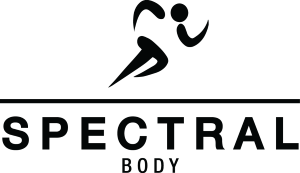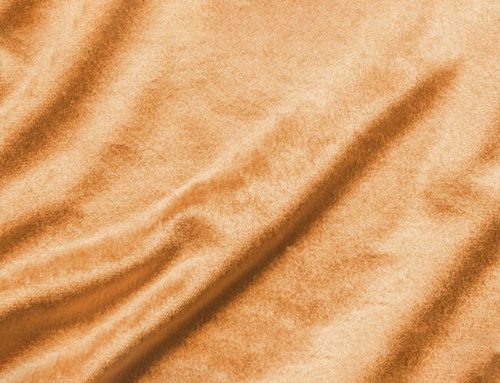
The COVID-19 health crisis has people around the world turning to face masks in order to protect themselves and others from the disease. Of course, the need to regularly wear masks in public means individuals often require more than one mask to get by. Luckily, many companies have begun manufacturing washable, reusable masks as a solution to this problem. Some, however, are also touting reversible antiviral face masks. And the majority of reversible masks are actually counterproductive when it comes to staying healthy.
Although the ability to flip one’s mask and reuse it may seem practical at first glance, it presents problems that wearing a new, clean face simply wouldn’t. A face mask may not function as intended if flipped inside-out. It also may actually increase the likelihood of the wearer picking up germs. Here’s why reversible masks are generally a bad idea.

Why Reversible Masks Are a Bad Idea
Wearing reversible face masks is a big no-no for a couple of reasons. For one, if the mask isn’t specifically designed to be worn this way, it can pose a problem. In some instances, reversing which fabric faces inward and which faces outward will cause the mask not to function properly. This means you may not be protecting yourself or those around you as well as you’d like. This is especially true of disposable masks, but it also applies to reusable ones.
For example, disposable face masks that are white inside and blue outside must be worn this way to be effective. That’s because the outer blue side is waterproof and protects the wearer from other people’s droplets. Meanwhile, the inner white part of the mask is absorbent and protects others from your droplets.
It’s not just disposable medical masks that are created using materials with specific functions either. If a mask isn’t intended to be reversible, it’s best to assume it’s designed with an outside and inside for a reason. Even if it means washing your mask an additional time or breaking out a new one, at least you’ll know you’re being safe.
As for masks that are designed to be reversible, cross-contamination still presents a big issue for the wearer. If your mask is facing outward most of the day — and especially if you placed it down somewhere — the outer material may pick up germs. To then reverse the mask could result in any bacteria or dirt getting on your nose and mouth. That’s definitely something you don’t want to happen if you’re trying to avoid getting sick. Even if you don’t pick up COVID-19 this way, you could make yourself more vulnerable to other infections.

What About Using Someone Else’s Mask?
If you’ve forgotten your face mask at home, you may be tempted to borrow one from someone else. If they have an extra that hasn’t been worn yet, that shouldn’t pose a problem. (It’s most advisable, however, to always keep a spare around for this purpose.) One thing you should never do, however, is to borrow someone’s mask and turn it inside-out. You may think this is a foolproof way to avoid swapping germs, but it isn’t.
As we’ve already emphasized, putting the outer portion of a mask on your face puts you at greater risk. The outside of your friend’s mask may have bacteria, dirt, or even other people’s droplets on it. That on its own is enough reason to steer clear of placing it anywhere near your face. Masks also aren’t so thick that you’d want to put yourself so close to someone else’s germs. Although the inner portion of the mask may be facing away from you, what happens if you touch it?
Even freshly washed masks shouldn’t be shared amongst friends and family members. Speaking to POPSUGAR, Krutika Kuppalli, MD, assistant professor in the Division of Infectious Diseases at the Medical University of South Carolina and Emerging Leaders in Biosecurity fellow at the Johns Hopkins Center for Health Security, likened sharing masks to sharing underwear. It’s not something you want to do, even if it’s with the people in your household.
“You are not just thinking about COVID-19 but other bacteria, Krutika explained. “Even if you are washing, they are not things you should be sharing with other people.”
Outside of spreading disease, Krutika also touched on the fact that sharing masks can cause them to fit poorly. This could put wearers at greater risk down the line, another outcome that just isn’t worth the risk.

Other Common Mask Mistakes
Sharing with others and wearing them inside-out aren’t the only common mask mistakes people make. The CDC published a guide outlining the proper use of masks and some mistakes wearers should avoid. These are some of the things the organization warns against:
- Wearing masks that don’t fit properly
- Wearing masks made from fabrics that are too light
- Wearing masks with only one layer of protection
- Using masks with valves or vents
- Reusing disposable face masks
- Failing to cover one’s mouth and nose with a mask
- Not social distancing while wearing a mask
- Using a mask as a substitute for hand-washing
It’s important to listen to experts when it comes to using face masks properly. They’ve been proven effective in curbing the spread of disease, but that’s only when used right. The correct use of masks can protect the wearer and those around them. However, making one of these mistakes can leave everyone present more vulnerable.

A Possible Solution: Copper
The safest solution to needing masks often is to buy in bulk or wash them regularly. However, if for some reason you must use a reversible mask, copper may offer some protection. Copper-infused materials have long been used to prevent the spread of germs. That’s because copper has antimicrobial properties that can help prevent the spread of disease. In fact, copper has even been shown to kill many germs on impact. That’s an impressive feat, even if it isn’t foolproof.
By wearing a copper mask, you eliminate many of the concerns about cross-contamination that accompany regular cloth masks. Because copper can kill bacteria and viruses that come into contact with it, touching the outside of a copper-infused mask or placing it down somewhere doesn’t come with as much risk. For that reason, using that side of the mask isn’t quite as dangerous either.
It’s important to note, however, that the safest route is still to use a different mask. Copper isn’t infallible in preventing disease; it merely adds additional protection. Copper-infused masks aren’t proven to kill or fight COVID-19. Additionally, the face mask must be infused with copper to offer any protection at all. Some brands use copper on the outside of masks, but this can wear or wash off over time.
In addition to curbing the spread of COVID-19, copper-infused masks do offer other benefits. Some notable ones include:
- They tend to be made with light, breathable materials.
- Copper can prevent discoloration and odor from accumulating on the mask.
- Copper masks can be kinder on the skin, especially for those who have allergies or sensitivities.
Here’s how copper works to deliver some of these benefits:
| Benefit | Why It Helps |
|---|---|
| Copper masks can decrease the spread of bacteria and viruses through antimicrobial properties. They also limit cross-contamination from touching masks or putting them down on surfaces. | Experts have shown that bacteria and viruses have a shorter lifespan on copper than on other surfaces. Additionally, copper can kill microbes and alter their genetic coding, causing them to act differently than they normally would. |
| Copper-infused masks tend to be made from nylon and other comfortable, lightweight materials. | Not only do these materials offer breathability and increased comfort, but mixed with the antimicrobial properties, they’re also kinder to the wearer’s skin. |
| Antimicrobial properties prevent odor and discoloration from building on the mask. | Decreased odor and discoloration enable the mask to stay cleaner for longer and enhances the wearer’s comfort. |

Which Copper Masks Are Best?
If you’re debating a copper mask, it’s important to read the product description and ensure it has antimicrobial properties. Not all copper products offer the same level of protection, but it’s usually easy to tell which are superior. If it doesn’t discuss germ-fighting properties, it’s best to look for a mask that does. Most brands that offer antimicrobial products will state that.
One of the most effective copper-infused masks available is Spectral Body’s Copper Ion Training Mask. This brand specifies on its website how exactly its product fights bacteria and viruses. It’s shown to kill 99.99% of germs on contact and has been lab-tested by experts. It also boasts benefits like adjustable straps for increased comfort and fabric that’s less irritating to sensitive skin. Its odorless, lightweight fabric makes it ideal for everyday activities or heavier use.
Some other copper-infused masks with similar benefits to look into include:
- Atoms Everyday Mask
- Copper Compression Copper-Infused Face Mask
- Ari Jogiel’s The Vanguard Mask
- American Giant Face Masks
Reading reviews for these products can help you determine which best fits your needs. Even if you do decide to take advantage of a copper-infused covering and its benefits, however, remember to take all necessary precautions. Experts still don’t recommend wearing your mask inside-out, nor do they suggest making the other common mask mistakes. Copper can offer some protection, but wearing a mask properly is equally as important.






Great article. Please post more like this!
I just don’t think a reversible mask is hygienic, the other part could be already dirtied of dust.
Very well said.
I really like the Copper ION Training Mask. I highly recommended it.
I had bought your Copper Training Ion Mask and it’s really worth your bucks! And this is a really nice post. Keep it up!